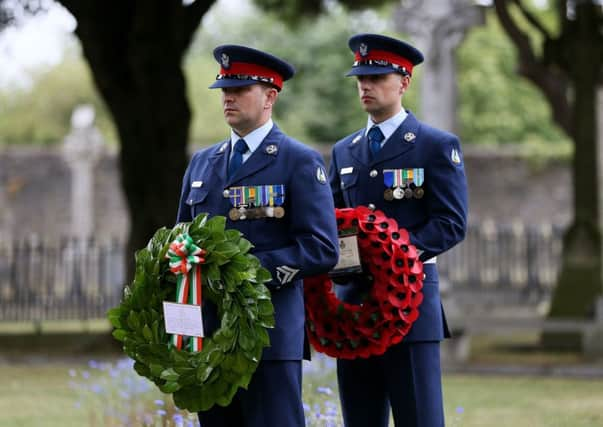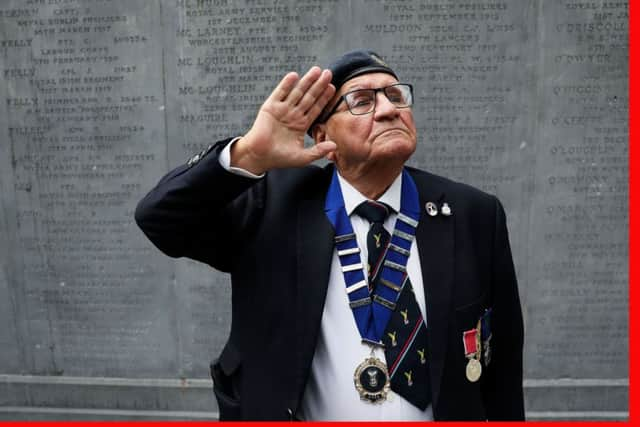VC hero honoured at Glasnevin


The minister with responsibility for defence Paul Kehoe and British Ambassador Robin Barnett, attended the ceremony to honour Major Edward “Mick” Mannock, recipient of the Victoria Cross.
Edward Corringham “Mick” Mannock was a member of the Royal Flying Corps and the Royal Air Force during the First World War.
Advertisement
Hide AdAdvertisement
Hide AdBorn on May 24 1887, the proud Cork man was a pioneer of fighter aircraft tactics in aerial warfare. Mr Mannock was the most highly decorated British fighter pilot of the First World War and was eventually credited with 73 combat victories.


He died on July 26, 1918, when his aircraft was shot down over France.
John Green, chairman of Glasnevin Trust said that Mannock’s personal story was an accurate insight into life before Irish independence.
“If you want to get an insight into the complexity of our history, even a shallow dive into the life and times of ‘Mick’ Mannock will open your eyes. The son of a bigamist, deserter, and raised by his abandoned mother from Ballincollig, he fended for himself from an early age.
Advertisement
Hide AdAdvertisement
Hide Ad“He was an Irish nationalist, a home ruler, a trade unionist and a socialist who believed the world war would finally give the ‘downtrodden’ their chance.”
Adding that Mannock’s birthday, birth place and how he died all remain disputed, Mr Green said: “Mick Mannock poses more questions than he answers.”
During his speech Mr Kehoe said: “As a member of government it is my great privilege to partake in events that provide an opportunity to look back on the journey we have taken with a focus on our joint history. Events such as today, bring to mind the sacrifice, courage and idealism of our forebears who laid the foundation for the freedoms we enjoy.”
The British Ambassador to Ireland, Robin Barnett, said that he was honoured to be involved in the commemoration to recognise such an important officer in the RAF’s history.
Advertisement
Hide AdAdvertisement
Hide Ad“The outstanding gallantry of the proud Irish nationalist Major Edward Corringham ‘Mick’ Mannock, one of the most decorated officers ever to serve in British uniform, reminds us of the contribution made by so many brave men and women from both of our islands during critical and at times complex episodes in our shared history.”
During the ceremony, a historical reflection was read by Corporal Michael Whelan of the Air Corps, wreaths were laid at the Cross of Sacrifice, and a minute’s silence was followed by a piper’s lament and the Last Post and Reveille.
• Edward Mannock was working in Turkey when he was interned at the outbreak of war. He returned to Britain in April 1915.
Despite only qualifying as a pilot and entering the war in March 1917, by the time he was killed over France in July the following year, Mannock had been promoted to major, downed at least 61 enemy aircraft and earned a Victoria Cross which was awarded posthumously.